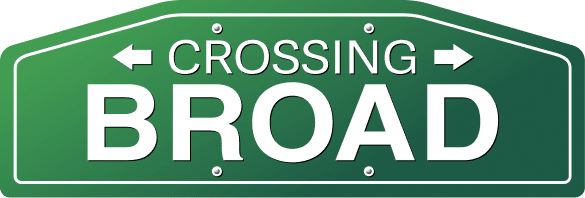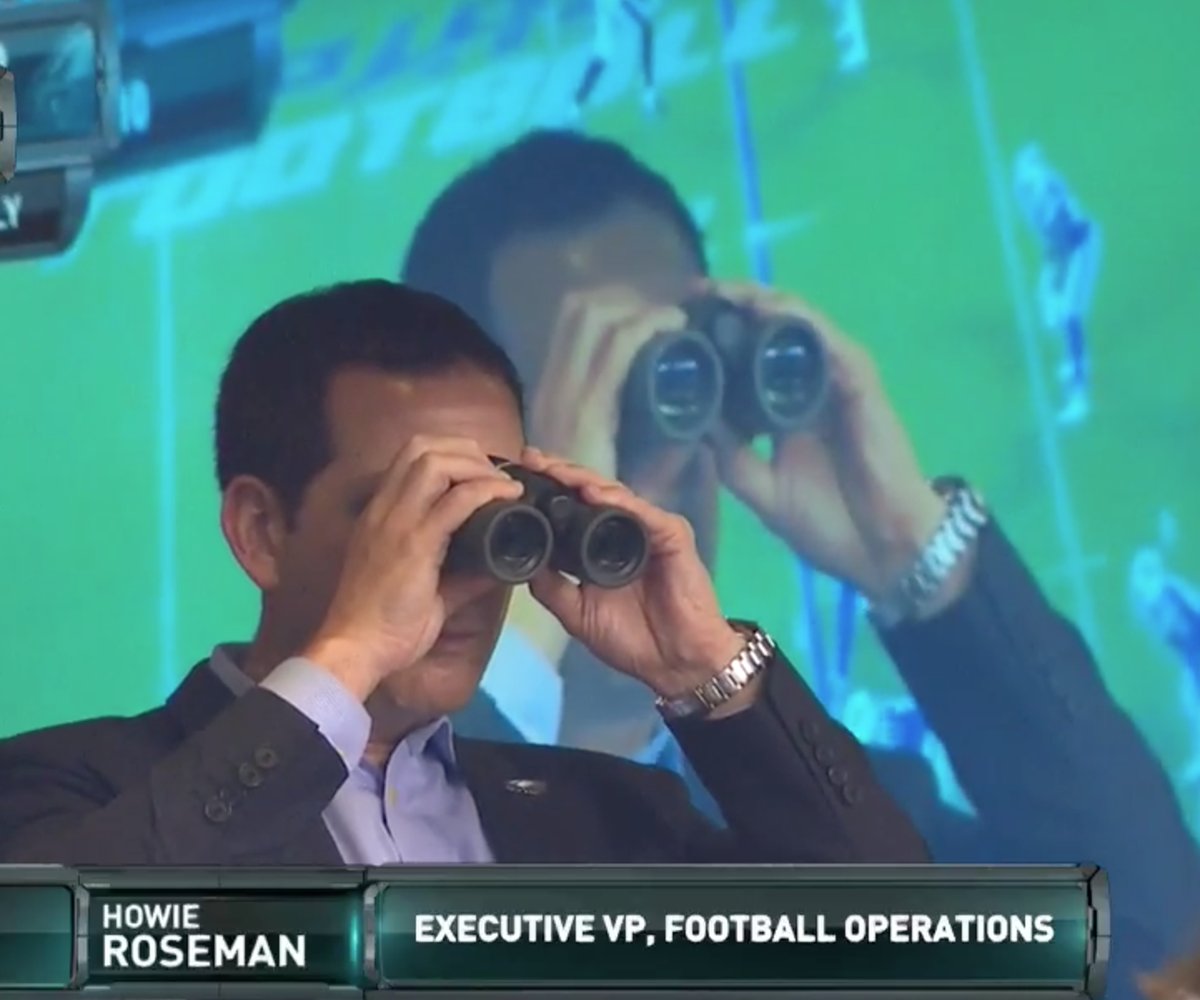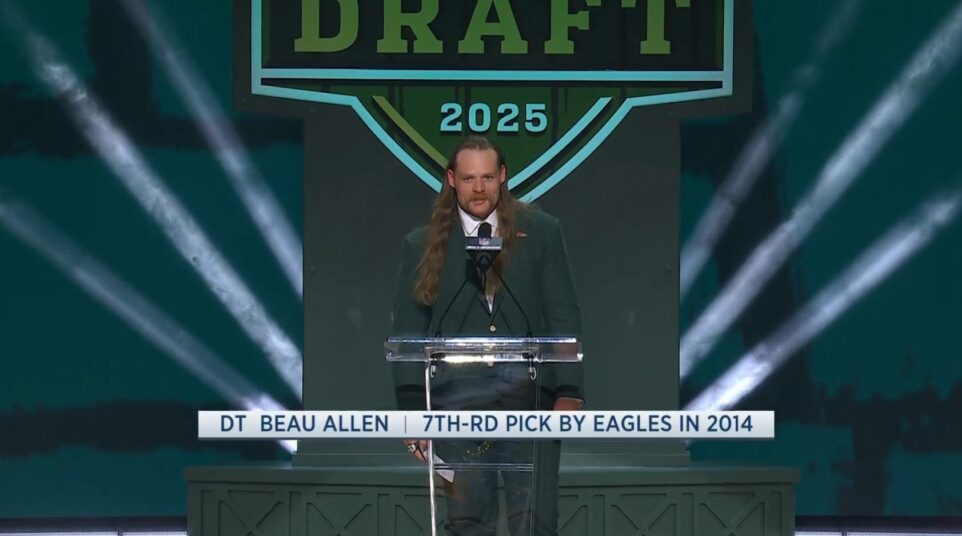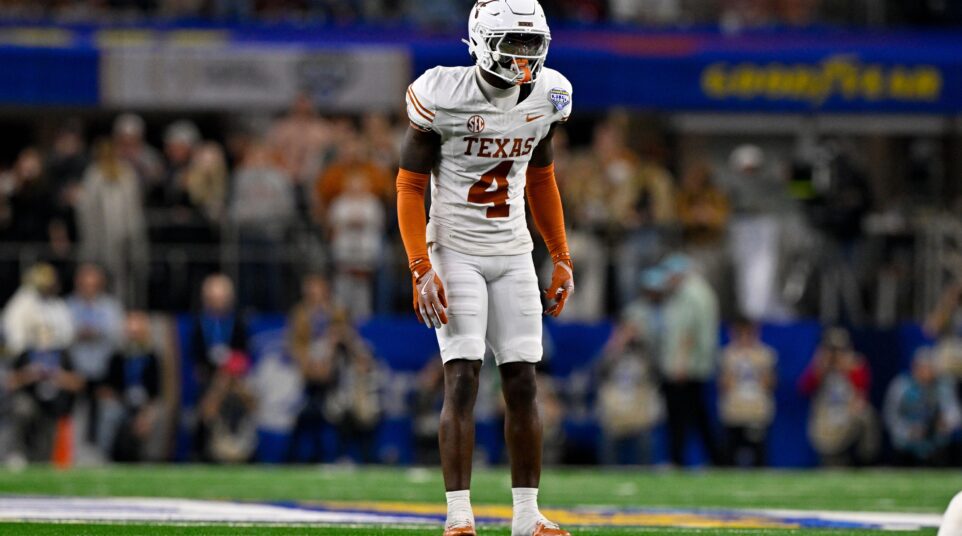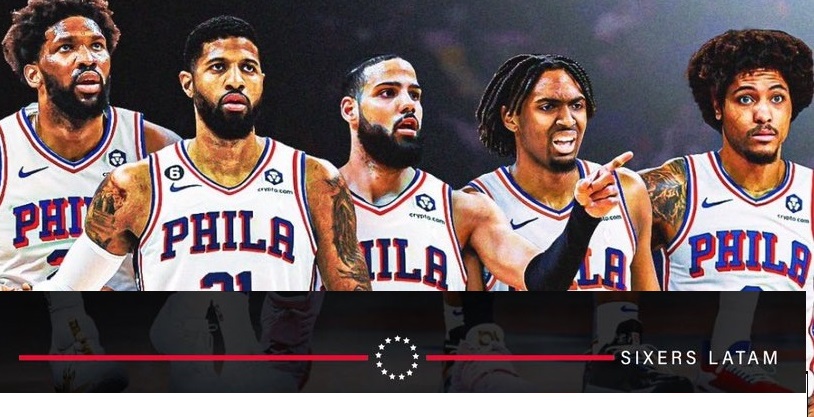
Five Early Thoughts on the Sixers (Presumed) Starting Lineup
With the Sixers signing Caleb Martin to a four-year deal and waiving Paul Reed over the weekend, it looks as though the starting five for the upcoming season is set. They’ll return Joel Embiid, Tyrese Maxey, and Kelly Oubre Jr. while adding Martin and nine-time All Star Paul George.
On paper, it’s a lineup that looks much more capable in a two-way sense. The wing deficit of years past is gone, as the Sixers roll a lineup that addresses most of last season’s deficiencies, at least on paper.
For the sake of the exercise, we’ll call this the starting five as of July 8th. Some thoughts on the group:
1. ball handling
Who’s the point guard?
Maxey can handle the bulk of the duties. He’s coming off a career-high 5.9 assists per-36 minutes and only turns the ball over 1.6 times per-36 while carrying a usage rate of 28%. That assist number is up significantly from his rookie year, while the turnover number is flat. His assist to turnover ratio is good and he’s already a quality pick and roll ball handler, so there shouldn’t be any issues with him at the 1.
Joel Embiid will also carry the ball up the floor. George can do it as well. If you’re a believer in positionless basketball, then anybody can be the de facto floor general. It doesn’t necessarily have to be the point guard, and it opens up those off-ball opportunities for Tyrese, where he can catch and shoot or attack closeouts and use his speed to attack the rim. We saw a lot of offensive initiation from Boston’s wings in the postseason, and if the Sixers find a second unit ball handler on the minimum, or even wait until the buyout portion of the schedule, they’ll be fine here.
2. rebounding
The Sixers were a poor rebounding team in 2023-2024. They got crushed on the glass in the Knicks series and finished the regular season 25th with a 70.1 defensive rebounding percentage. They don’t have a true power forward in the starting lineup, or anywhere on the roster (more on that later) unless Adem Bona carves out a year 1 role. That said, I think this is a good point:
An idea Derek has hammered home on the show this offseason (that i agree with) is that if you create a better/more switchable 2-4 and clean up defense on the perimeter, Embiid has to do less cat and mouse defending in space and will end up in better position to rebound https://t.co/ZcBT7AY8VM
— Kyle Neubeck (@KyleNeubeck) July 6, 2024
Embiid isn’t the best rebounder. His greatest trait on the glass is the fact that he’s seven feet tall, but he doesn’t anticipate or attack the boards the way others do.
That said, the theory is plausible. A lot of times you’ll see Joel in less-than-ideal scenarios because he’s compensating for someone else’s defensive deficiencies, i.e. he’s drawn out of the paint or has to step higher in pick and roll coverage and it takes him away from the rim.
If you’re better on the perimeter, that’s less he has to worry about on the defensive end. And if he doesn’t have to carry the load every night on the offensive end, we’re talking 30% usage rate or higher, then maybe he has more to give in protecting the paint and focusing on the glass and addressing that problem. Joel averaged 22 shots and 12 free throws per game last year. Maxey had 20 FGA per game. Now here comes Paul George and his 17 FGA while sharing the floor with Kawhi Leonard and James Harden. There’s likely going to be less for Embiid to carry on the offensive side this year, which theoretically leaves him less depleted on the defensive side.
3. three point shooting and areas of weakness
Career numbers from beyond the arc:
- Paul George: 38.5%
- Tyrese Maxey: 37.3%
- Caleb Martin: 35.7%
- Kelly Oubre: 32.7%
- Joel Embiid: 34.1%
Not the Splash Brothers, but solid, and while you don’t have a JJ Redick sniper out there, all five of these guys can play respectable defense, or at least will put in the requisite effort under Nick Nurse. Again – you can’t have enough two-way wings in 2024.
Believe it or not, the Sixers finished the playoffs with the best three point percentage at 37.9. They shot almost 36 attempts per game. That was despite being a middle of the pack team in the regular season at 36.3% on 33 attempts per game. They were top five in FTA and free throw percentage on the strength of Embiid and that got them into the top 15 of offensive rating. They did limit opposition points off turnovers, but were weak in defensive transition (15.4 opponent fast break points per game) and need to clean up on the defensive glass. Outside of that, there weren’t glaring deficiencies across the board.
4. shot creation, initiation, and closing
I still think the thing that’s eluded the Sixers the most over the years has been the lack of consistent playoff shot creation in the half court. When the game slows down and defensive effort is at the max, who is generating and taking that final shot?
In 2019, it was Jimmy Butler, who got those pick and roll reps against Toronto. It certainly wasn’t Ben Simmons or Tobias Harris taking that shot, and Embiid was yet to become the multi-level scorer he is now. But even then, is Embiid, at 7’2″, the guy with the ball in his hands on the perimeter in Game 7, ala Jayson Tatum or Jaylen Brown? When Maxey went nuclear against the Knicks in Madison Square Garden, Joel became a glorified screener, and the Sixers ran high middle pick and roll over and over and over again en route to 46 Tyrese points and an overtime win.
It’s not a perfect stat, but the NBA logs this “clutch” number, which describes the final five minutes of a game in which the margin is five points or less. Here are Paul George’s 2023-2024 numbers for:
- the regular season: 19-39 (48.7%), 8-20 from three (40%), 30-32 from the foul line, 20-12 record in games played
- playoffs: 1-1, no threes, 3-5 from the foul line (60%), 1-1 record
No real sample size for this most recent postseason, which only featured two close games for the Clippers. In the regular season, Kawhi Leonard took the majority of the shots in the final moments (66) total, but George has decent numbers there. My hope is that he becomes a legitimate closing option to spare us Joel flailing around, trying to create from the perimeter, and that the burden can be shared with a still-young Maxey. That’s what PG is here for.
5. do you even need a power forward?
The 76ers landed an impactful commitment in Caleb Martin, a playoff-tested power forward and versatile defender who joins Philadelphia after three seasons with the Miami Heat.
Martin is expected to become the Sixers’ starting power forward, sliding into a frontcourt that now includes All-NBA forward Paul George and MVP center Joel Embiid. He joins a free agent class that includes George, Eric Gordon and Andre Drummond.
Caleb Martin, a power forward? He’s 6’5″, 205. He’s not a four, but it doesn’t really matter because we just go back to the positionless basketball thing. You don’t need a four if you have good wings. Boston ran through the NBA playing with Al Horford, 6’8″ Jayson Tatum, 6’6″ Jaylen Brown, a couple of 6’4″ guards, and didn’t have Kristaps Porzingis for long stretches of the postseason. And in the Sixers’ case, you’re really just asking yourself if you have the personnel to match up with Tatum, Brown, Jalen Brunson, and Giannis, maybe even guys like Tyrese Haliburton and Pascal Siakam. It’s more about having guys who can handle these various assignments, vs. penciling in some restrictive height/weight numbers and saying, “welp, we’ve got it all covered!” You need athletic, switchable, two-way wings in this NBA. It looks like the Sixers have several of those for the first time in some time.
